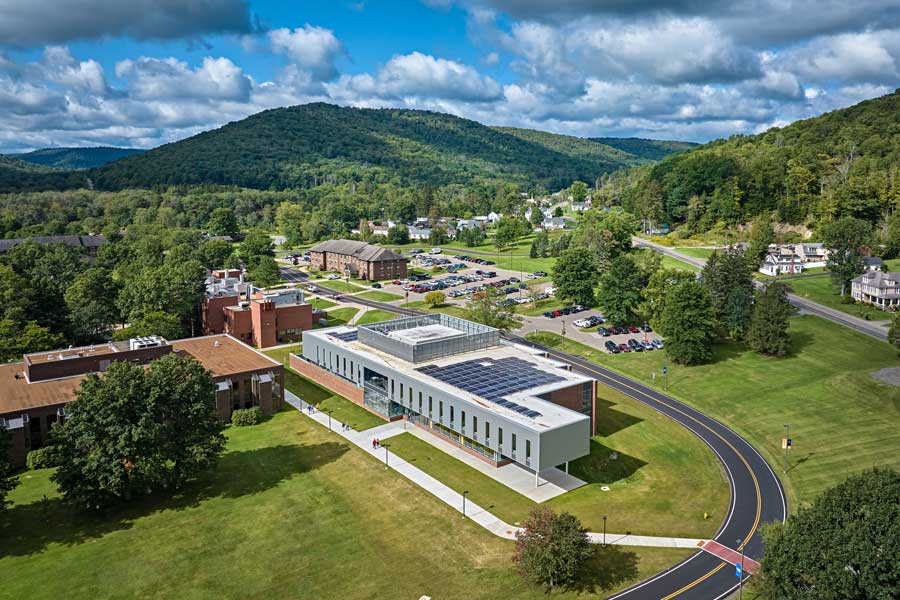Governor to honor campus for solar array
President Esch and Dr. Matt Kropf to accept award April 30th

The University of Pittsburgh at Bradford will receive one of 22 Governor’s Awards for Environmental Excellence for a rooftop solar array on the George B. Duke Engineering and Information Technologies Building.
Richard Esch, president of Pitt-Bradford, and Dr. Matt Kropf, director of the Harry R. Halloran Jr./ARG Energy Institute at Pitt-Bradford, will attend a dinner April 30 in Harrisburg to accept the award.
“This year’s Environmental Excellence honorees showcase the innovative ways we can protect our environment and shape a more sustainable future here in Pennsylvania,” said DEP Interim Acting Secretary Jessica Shirley. “Together we will spur the next generation of environmental stewards, and these projects represent our ability to work together and preserve Pennsylvania’s natural resources.”
Applications were evaluated for their degree of environmental protection, innovation, partnership, economic impact, consideration of climate change, sustainability, and environmental justice, as well as outcomes achieved.
“Pitt-Bradford is committed to environmental and economic sustainability as well as providing leadership and service to our local and regional communities,” said Richard Esch, president of Pitt-Bradford. “This project not only generates energy to help supplement the power needs of the Duke Building, it also provides an educational tool for our campus and the community about the importance of sustainability and renewable energy.”
This solar array was installed and working in March 2023 and to date has generated over 60 megawatt hours of green electricity for Pitt-Bradford. In addition, the solar array is the largest rooftop solar array in the University of Pittsburgh system, and it provides over 40% of the Duke Building’s electricity.
The installation takes advantage of the latest in solar panel technology to maximize efficiency, storage, and integration into the existing energy infrastructure. The panels use advanced technologies that are more efficient in converting sunlight to electricity. Storage is integrated into the system, allowing the array to store excess energy during peak production periods to use during times of low sunlight, providing a more consistent and reliable power supply. Finally, panels capture sunlight from both the front and rear sides, increasing energy yield by reflecting light that reaches the back of the panel and enhancing overall efficiency.
--30--